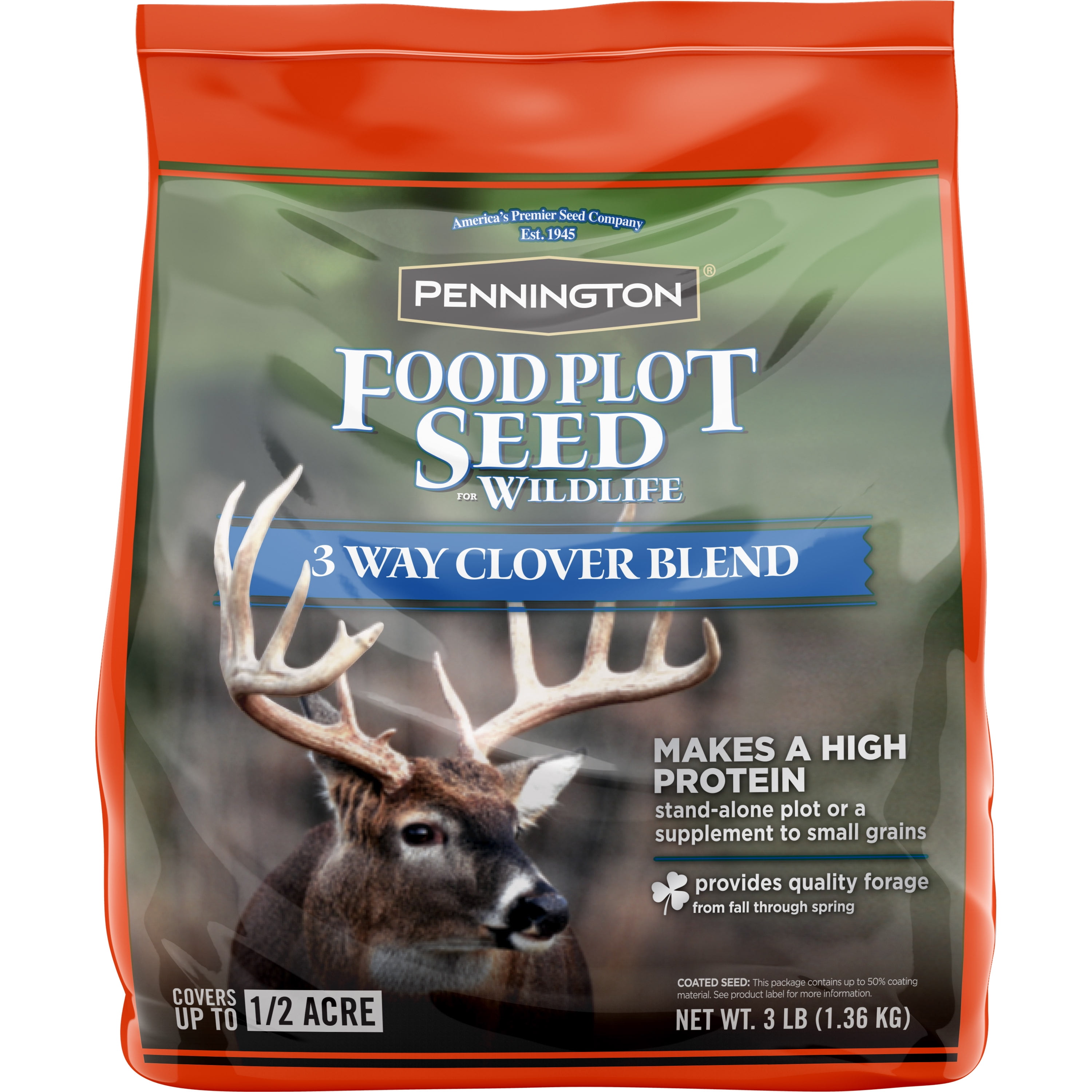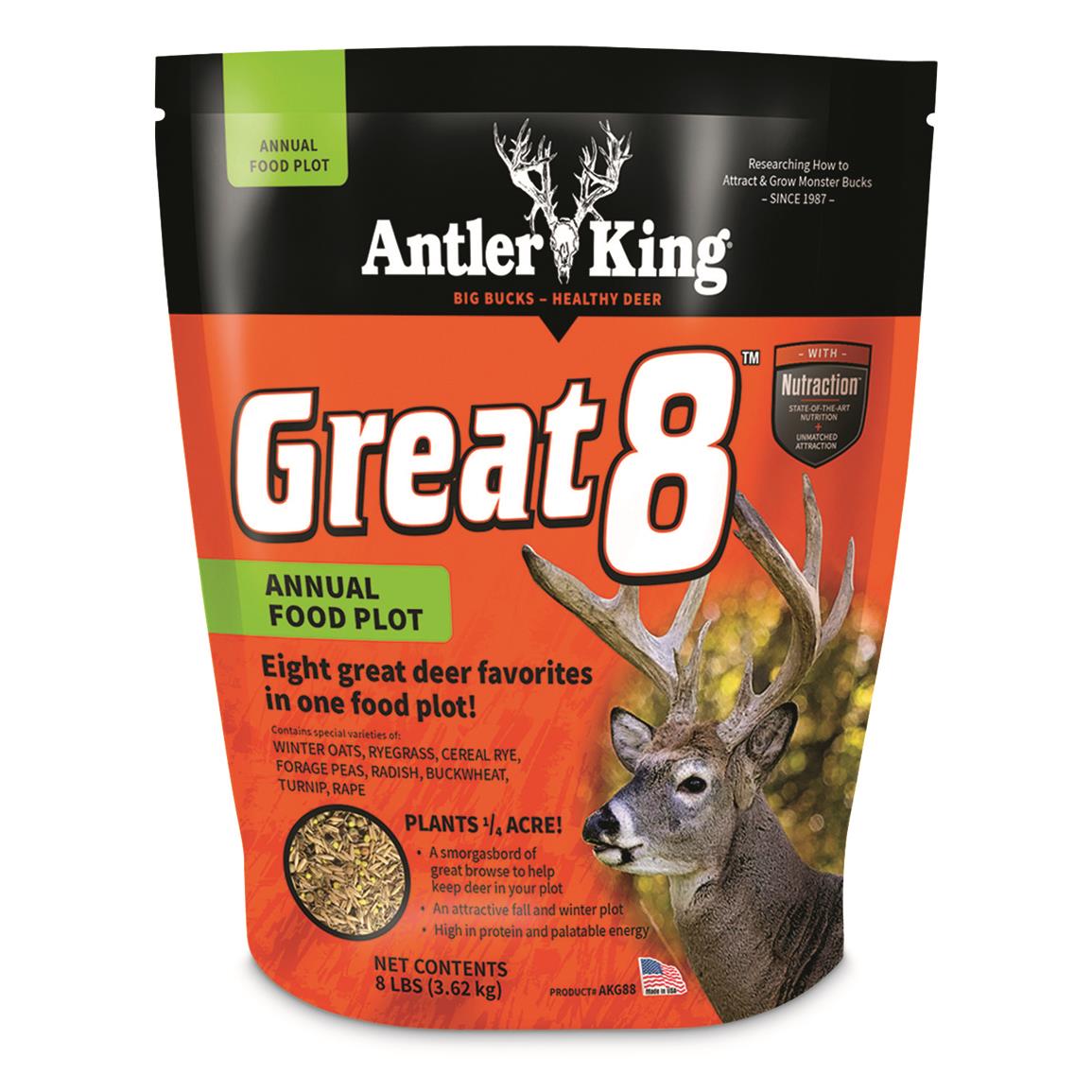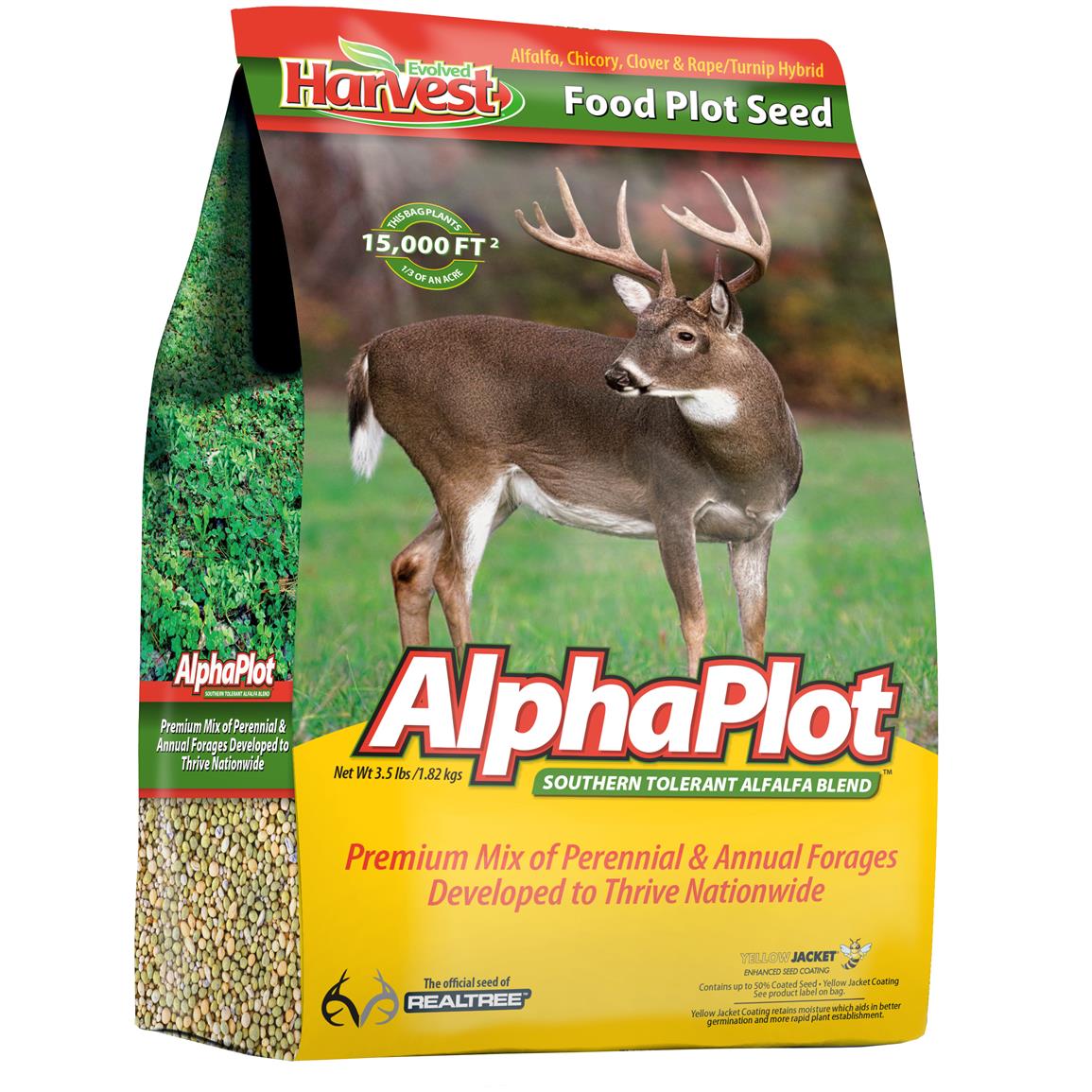Meals plot seeds are the cornerstone of natural world control, offering crucial diet and habitat for a variety of species. This complete information will delve into the kinds, planting tactics, advantages, and issues for settling on and managing meals plot seeds, empowering you to create thriving natural world havens.
From choosing the proper seed types to designing efficient meals plots, this information will equip you with the data and methods to ascertain and care for flourishing natural world habitats.
Advantages of Meals Plot Seeds

Meals plot seeds supply a variety of dietary advantages for natural world, making them a vital part of habitat control. Those seeds are wealthy in carbohydrates, proteins, fat, and crucial nutrients and minerals, offering animals with the essential vitamins for enlargement, copy, and general well being.
Through setting up meals plots, landowners can complement herbal meals assets and give a boost to the dietary standing of natural world populations.
Habitat Development and Animal Appeal
Meals plots additionally play a an important function in habitat development. They invent concentrated spaces of top quality meals, which draws a lot of natural world species. Deer, turkeys, and different sport animals are interested in meals plots, as they supply a competent supply of nourishment during the 12 months.
Moreover, meals plots can function quilt and nesting websites for birds and different small animals, improving the full biodiversity of the realm.
Financial and Leisure Advantages
Meals plots be offering each financial and leisure advantages to landowners and hunters. Through setting up meals plots, landowners can building up the wearing capability in their assets, main to greater and more fit natural world populations. This may end up in higher looking alternatives and earnings from looking rentals.
Moreover, meals plots supply a novel leisure enjoy for hunters, permitting them to practice and engage with natural world in a managed surroundings.
Issues for Deciding on Meals Plot Seeds
Selecting the proper meals plot seeds is an important for maximizing the advantages they provide to natural world. A number of elements wish to be regarded as to verify optimum seed variety, together with the objective natural world species, soil stipulations, and local weather of the realm.
The kind of natural world that will likely be using the meals plot must be the main attention when settling on seeds. Other species have particular nutritional personal tastes and dietary necessities. For example, deer want high-protein forage corresponding to clover and alfalfa, whilst turkeys favor seeds and grains like corn and soybeans.
Soil Prerequisites
The soil stipulations of the planting web page play a very important function in seed variety. The pH stage, drainage, and soil texture can considerably have an effect on seed germination and plant enlargement. Acidic soils would possibly require the addition of lime to lift the pH, whilst poorly tired soils would possibly want drainage enhancements to forestall waterlogging.
Local weather
The local weather of the realm the place the meals plot will likely be established must even be regarded as. Temperature, precipitation, and daylight availability can affect seed germination and plant enlargement. As an example, warm-season vegetation like soybeans and sorghum are very best fitted to spaces with lengthy, scorching summers, whilst cool-season vegetation like clover and wheatgrass thrive in cooler climates.
Control of Meals Plots

Keeping up and bettering meals plots require right kind control tactics to verify optimum enlargement and yield. Those tactics come with mowing, weed regulate, soil checking out, crop rotation, and illness prevention.
Mowing
- Mowing is helping regulate weeds and advertise tillering, leading to denser enlargement and higher forage manufacturing.
- Mow at a peak of 6-8 inches to care for a wholesome cover whilst permitting daylight penetration.
- Mow ceaselessly, particularly right through the early levels of enlargement, to forestall weeds from setting up.
Weed Regulate
- Weeds compete with meals plot vegetation for vitamins, water, and daylight, lowering yields.
- Use selective herbicides to regulate weeds with out harming the specified vegetation.
- Practice herbicides in line with the producer’s directions and steer clear of spraying right through windy stipulations.
Soil Trying out, Meals plot seed
- Soil checking out supplies treasured details about soil fertility and nutrient ranges.
- According to soil check effects, practice suitable fertilizers to proper nutrient deficiencies and give a boost to soil well being.
- Habits soil exams ceaselessly to observe soil stipulations and modify control practices accordingly.
Crop Rotation
- Rotating vegetation prevents illness buildup and improves soil well being via diversifying plant species.
- Plant various kinds of vegetation in the similar house in a sequential order to steer clear of planting the similar crop again and again.
- As an example, rotate between legumes (e.g., clover, beans), grasses (e.g., corn, wheat), and brassicas (e.g., turnips, kale).
Illness Prevention
- Illnesses can considerably have an effect on meals plot yields and plant well being.
- Use disease-resistant sorts of vegetation and observe excellent sanitation to forestall illness outbreaks.
- Take away diseased vegetation promptly and put off them correctly to forestall the unfold of an infection.
Designing Meals Plots
Designing efficient meals plots calls for cautious attention of the objective natural world species, their dietary wishes, and the particular habitat stipulations. Through incorporating local vegetation, quilt vegetation, and a lot of meals assets, landowners can create meals plots that offer year-round sustenance and fortify natural world populations.
Incorporating Local Vegetation
Local vegetation are well-adapted to the native local weather and soil stipulations, offering a herbal meals supply for natural world. They continuously produce culmination, seeds, and read which are excessive in vitamins and crucial for particular species. As an example, deer favor local browse species corresponding to blackberry, sumac, and serviceberry, whilst turkeys take pleasure in local grasses and forbs that offer bugs and seeds.
Using Duvet Vegetation
Duvet vegetation are non-harvested vegetation that offer meals and canopy for natural world whilst bettering soil well being. They may be able to be planted in between meals plot seasons to suppress weeds, save you erosion, and draw in advisable bugs. Not unusual quilt vegetation for meals plots come with clover, alfalfa, and brassicas, which offer a high-protein meals supply for deer, rabbits, and different natural world.
Making a Number of Meals Assets
Providing a lot of meals assets inside of a meals plot guarantees that natural world have get right of entry to to a balanced nutrition during the 12 months. It will come with planting a mixture of grasses, legumes, and forbs that offer other dietary profiles and draw in a much broader vary of species.
As an example, a meals plot designed for deer and turkeys may come with a mixture of clover, alfalfa, corn, and sunflowers, offering a mix of protein, carbohydrates, and fat.
Examples of A success Meals Plot Designs
- Deer Iciness Meals Plot:A mixture of local browse species (e.g., blackberry, sumac), quilt vegetation (e.g., clover, alfalfa), and high-energy meals assets (e.g., corn, soybeans) supplies sustenance right through the tilt wintry weather months.
- Turkey Brood-Rearing Meals Plot:A mix of local grasses and forbs (e.g., clover, chicory), quilt vegetation (e.g., brassicas), and insect-attracting vegetation (e.g., sunflowers) supplies meals and canopy for hens and poults right through the spring and summer season.
- Upland Sport Chook Meals Plot:A mixture of local grasses, legumes, and forbs (e.g., millet, sunflower, lespedeza) supplies meals and canopy for quail, pheasants, and different upland sport birds.
Seed Assets and Availability

Figuring out respected seed providers and assets is an important for obtaining top quality meals plot seeds. A lot of corporations focus on offering seeds particularly adapted for meals plots, providing a variety of species and blends. Researching and evaluating seed providers is advisable to verify their reliability, seed high quality, and customer support.
Seed Availability and Pricing
Seed availability varies relying at the species and area. Some standard species are broadly to be had, whilst others would possibly require specialised providers or on-line outlets. Seed pricing can range considerably in line with elements corresponding to species, seed rely, and packaging dimension.
Buying seeds in bulk can continuously lead to value financial savings.
Deciding on High quality Seeds
Opting for high quality seeds is very important for a hit meals plot established order. Search for seeds with excessive germination charges, indicating the share of seeds that can effectively germinate and develop. Illness resistance could also be crucial attention, as it could actually save you crop loss because of pathogens.
Moreover, believe the adulthood dates of various species to verify a staggered meals supply during the 12 months.
Examples of Meals Plot Seed Mixes
Meals plot seed mixes are particularly designed to offer optimum diet and draw in desired natural world species. Those mixes include a lot of seed varieties, every providing distinctive advantages. The desk beneath showcases standard meals plot seed mixes, along side their seed composition, planting charges, and goal natural world species.
When settling on a meals plot seed combine, believe the area and local weather of your location. Other mixes are adapted to thrive in particular environmental stipulations. Talk over with native mavens or confer with on-line assets to resolve essentially the most appropriate combine to your house.
Seed Combine Examples
| Seed Combine | Seed Composition | Planting Fee | Goal Natural world |
|---|---|---|---|
| Deer & Turkey Combine | Soybeans, Corn, Chicory, Clover | 100-150 lbs/acre | Deer, Turkey |
| Upland Chook Combine | Sorghum, Sunflowers, Millet, Partridge Pea | 50-75 lbs/acre | Bobwhite Quail, Pheasant |
| Heat-Season Forage Combine | Cowpeas, Lablab, Sunflowers, Sorghum | 100-150 lbs/acre | Deer, Turkey, Dove |
| Cool-Season Forage Combine | Clover, Alfalfa, Wheat, Oats | 50-75 lbs/acre | Deer, Elk, Rabbits |
| Pollinator Combine | Sunflowers, Red Coneflower, Butterfly Weed, Goldenrod | 25-50 lbs/acre | Butterflies, Bees, Birds |
FAQ: Meals Plot Seed
What are the most typical varieties of meals plot seeds?
Not unusual meals plot seeds come with clover, alfalfa, chicory, brassicas, and soybeans, every providing distinctive dietary advantages and attracting other natural world species.
When is the most efficient time to plant meals plot seeds?
The optimum planting time for meals plot seeds varies relying at the area and local weather, however normally falls within the spring or fall when temperatures are average and soil moisture is ok.
How do I select the fitting meals plot seed combine for my natural world species?
Believe the particular dietary wishes and personal tastes of the natural world species you need to draw in. Other seed mixes are adapted to draw deer, turkey, quail, and different natural world.
